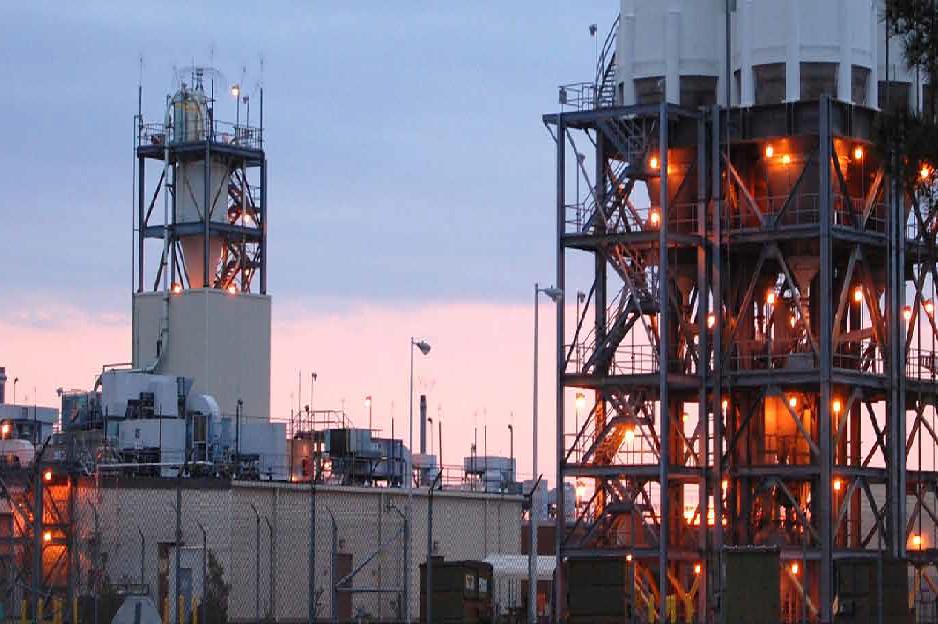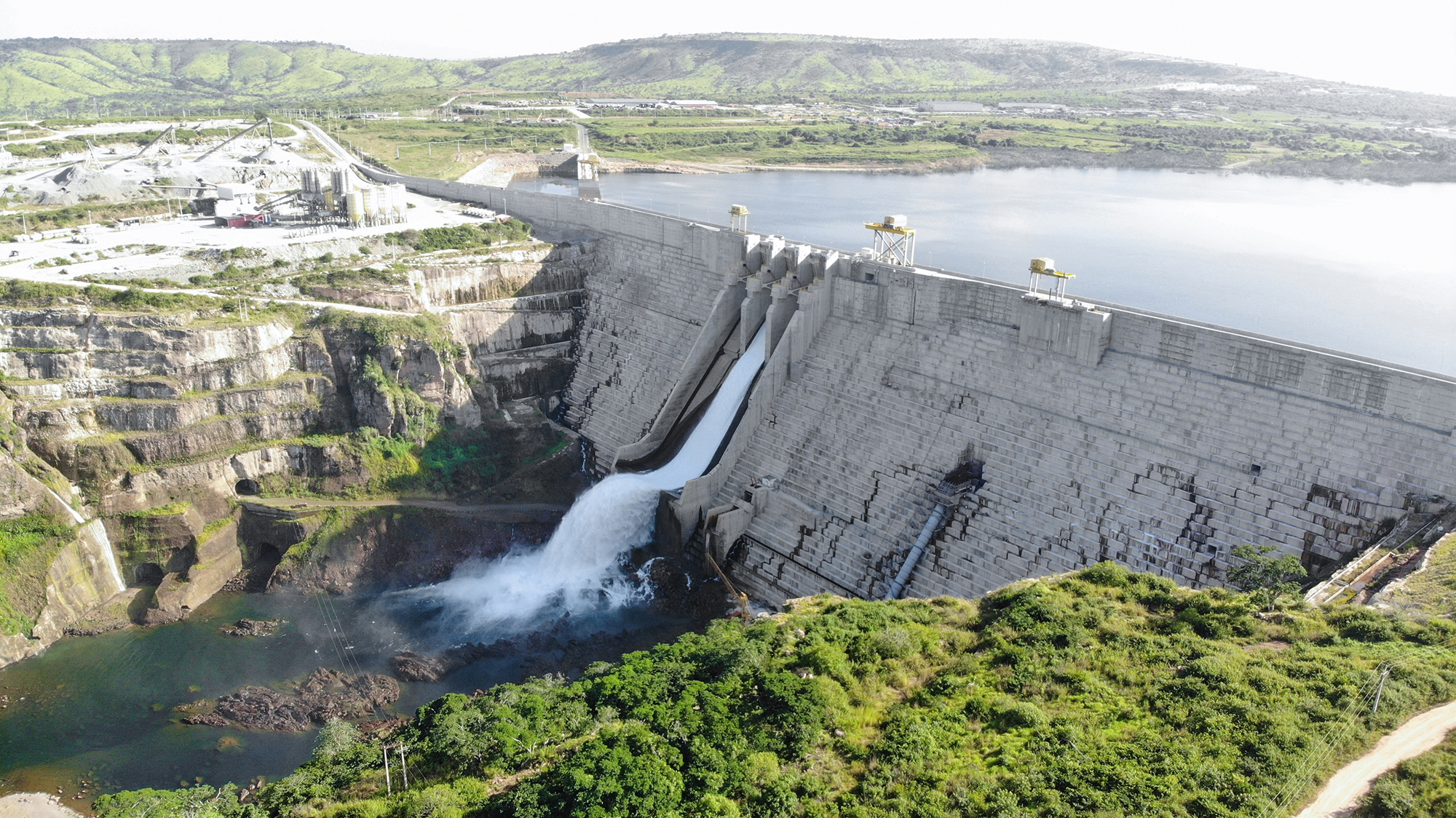
Savannah River Remediation (SRR) uses up to the minute technology and the smartest industrial methodology to carry out its taxing contract – to clean up a 60-year legacy of radioactive liquid waste in South Carolina.
Nuclear is a very emotive word. Working anywhere in the nuclear industry, says Dave Olson, is like working in a fishbowl: you are constantly in the public eye. Olson is President and Project Manager at SRR, and he should know. With 31 years’ experience in the industry, on the one hand he has best practices running through his veins – and on the other he realizes that nothing scares the general public more than the thought of radioactivity getting into the environment.
But the task of securing the Savannah River Site (SRS) has little in common with the nuclear power industry which catches the news every time there is a reactor failure. The United States has had an active nuclear program since World War II so it is not surprising that it has accrued a large number of nuclear installations both military and civil.
SRS, a 310 square mile reservation near Aiken in South Carolina, was built in the 1950s to refine nuclear materials under the management of the US Atomic Energy Commission – it contained five reactors, all now closed, and over the years generated large quantities of liquid waste that had to be contained. The waste, totaling about 38 million gallons, was stored in 51 underground carbon-steel waste tanks grouped into two tank farms.
SRR was set up in July 2009 to manage a multi-billion dollar contract to render all this high-level nuclear waste safe, the legacy of the growing nuclear industry, for all time. It is a consortium of companies under the leadership of URS Corporation, which has played an important role in the management of nuclear and hazardous waste facilities, and site remediation in the US and abroad (it manages the UK’s largest and most complex nuclear site at Sellafield).
This is an extremely sensitive process. The goal of SRR is to empty all the tanks, convert the contents into a solid glass form for long-term storage and disposal, and then fill the old tanks with cement, or grout as it is called, and seal them. “Once these tanks are closed they will be safe for 10,000 years,” says Olson, “and though we are in an area of seismic activity we will have nothing to fear from earthquakes.” The 10-foot long and two-foot wide stainless steel canisters, containing almost all of the radioactivity, are expected to be removed to a federal storage facility deep underground. The process of vitrification takes place at theDefense Waste Processing Facility (DWPF) on the site. The liquid nuclear waste in tank storage exists in two forms: a sludge form and a salt form and the plant is equipped to treat both forms of waste. “We put a lot of resources and a lot of effort into the way we treat the waste – we are not waiting on any technology,” he says.
Olson and his team are running a long-term process engineering project with a complex risk profile. The risk management plan is reviewed every year along with the system plan covering operations over the next 20 years and the schedule which ensures that operations are coordinated from day to day. Of the risks he identifies, some are technical. For example some of the tanks date back to 1953. Many of the original equipment suppliers of pumps, valves and all the process gear that was specified, are no longer in business, and getting spare parts can be a headache. There are political risks, too – the nuclear industry is the most closely regulated of all, and compliance may mean changing the way things are done.
However, the budgetary risk is the greatest discipline placed on a program like this: the nation has entered a period of austerity and cutting costs is a priority. “We are setting out to find out where we are most productive and where there are improvements to be made, and to do that we have adopted six-sigma tools,” says Olson. Better known in manufacturing, six-sigma uses statistical methods to determine process quality, workflow and other metrics to reduce defects and improve output. In the coming year he hopes to bring in lean techniques to deliver measurable gains in process efficiency; meanwhile, he notes, the community at large is benefiting as much as the business: an SRR team applied some of its techniques in a local school, saving it hundreds of thousands of dollars in energy costs simply by managing its energy use better.
Adopting six-sigma is helping SRR to do its work better, save money and do the right thing all at the same time. The average age of the workforce is 53 and while there are gains in maturity and experience it is a matter of regret that despite the labor shortage in the industry there is a lack of younger people coming forward. “People are working longer, and we have had to address the needs of the older workers,” he says. For example, larger computer screens and stronger lighting are simple ways to compensate for the deterioration of vision that creeps in as people get older. But don’t get the idea that there are no young people to be seen on the site. Caroline Hallman, one of the current college students working on SRR’s Internship program, is back for a second year; due to graduate this summer, she describes the opportunity as awesome!
On May 9 this year SRR passed an important milestone when it began grouting two of the 1.3 million gallon tanks, ahead of schedule. More than a million gallons of cement had been pumped into the tanks in an intensive operation that saw trucks shuttling loads of cement over a month. “Closing tanks 18 and 19 is a big step in our mission to close all of the hazardous waste tanks on the SRS and make them safe – and a great thing to be drawing a definitive line under the radioactive legacy of the nuclear program. Removing waste from old-style waste tanks and operationally closing these tanks takes dedication and teamwork. I am proud of our employees, who have worked together for the common goal.”
His pride is not misplaced – a couple of months earlier he was congratulating the 2,400 strong workforce on working 10 million hours without a lost-time incident (LTI). It is an indication that the site safety mantra ‘safety begins with me’ is taken seriously, says Olson. “This is an incredible accomplishment that demonstrates our attention to detail in hazard identification and control at the personal and group level day in and day out for almost two years.” To the wider world it serves as a useful reminder that managing hazardous material need not be hazardous work, and that if the people who work on the site itself can stay safe perhaps the myth of nuclear installations being inherently dangerous can be laid to rest.
Written by John O’Hanlon; research by Dan Finn
DOWNLOAD
 SRR-AM-July12-Bro-s.pdf
SRR-AM-July12-Bro-s.pdf













